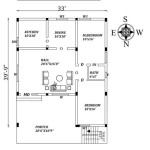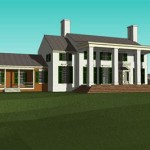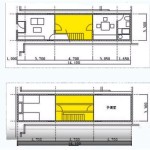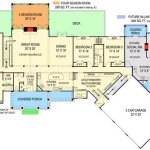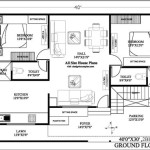Maine Small House Plans: Maximizing Value in a Compact Footprint
Maine, with its rugged coastline, dense forests, and independent spirit, is an ideal location for embracing the small house movement. Small house plans offer an attractive solution for individuals, couples, and small families seeking affordable homeownership, reduced environmental impact, and a simplified lifestyle. These plans are designed to maximize space efficiency and minimize construction costs, resulting in dwellings that are both economical and aesthetically pleasing. The following sections will explore the advantages, design considerations, and popular styles associated with Maine small house plans.
Financial and Environmental Advantages
One of the primary drivers of the small house movement is the significant financial savings associated with smaller dwellings. Reduced square footage translates directly into lower construction costs, requiring less lumber, roofing materials, siding, and interior finishes. This affordability makes homeownership more attainable for a wider range of individuals, particularly those who may be priced out of the traditional housing market. Furthermore, smaller homes generally incur lower property taxes, insurance premiums, and utility bills, contributing to long-term financial stability. Land costs, which can be a substantial portion of the overall investment in Maine, are also minimized with smaller footprints.
Beyond financial benefits, small house plans promote environmental sustainability. Smaller homes require less energy for heating, cooling, and lighting, reducing carbon emissions and reliance on fossil fuels. The use of sustainable building materials, such as locally sourced lumber, reclaimed wood, and recycled content insulation, further enhances the eco-friendliness of these structures. The reduced land footprint also minimizes disruption to natural habitats and preserves green space. Many small house designs incorporate passive solar heating and natural ventilation strategies to optimize energy efficiency and reduce reliance on mechanical systems. Rainwater harvesting and composting systems can also be integrated into the design to further minimize environmental impact.
Moreover, the inherent simplicity of a small house encourages a more mindful approach to consumption. With limited space, residents are forced to prioritize possessions and declutter, leading to a more minimalist lifestyle. This, in turn, reduces the demand for new products and minimizes waste generation. The small house movement promotes a shift away from consumerism and towards a more sustainable and fulfilling way of living.
Design Considerations for Maine Climates
Maine’s climate presents unique challenges and opportunities for small house design. The state experiences cold winters, hot and humid summers, and significant variations in precipitation. Consequently, proper insulation, ventilation, and moisture management are crucial considerations for ensuring comfort and durability. High-performance insulation materials, such as closed-cell spray foam or mineral wool, are often employed to minimize heat loss during the winter months and prevent overheating in the summer. A well-sealed building envelope is essential for preventing air leakage and moisture infiltration, which can lead to mold growth and structural damage.
Ventilation is equally important for maintaining indoor air quality and preventing moisture buildup. Natural ventilation strategies, such as strategically placed windows and operable skylights, can effectively circulate fresh air throughout the house. Mechanical ventilation systems, such as heat recovery ventilators (HRVs) or energy recovery ventilators (ERVs), can provide controlled ventilation while minimizing energy loss. These systems exchange stale indoor air with fresh outdoor air, while recovering heat or cooling energy from the exhaust air.
The orientation of the house is also a critical consideration for maximizing passive solar heating and minimizing heat gain. In Maine, a south-facing orientation is ideal for capturing sunlight during the winter months. Overhangs and awnings can be used to shade windows during the summer, preventing excessive heat gain. Deciduous trees planted on the south side of the house can provide shade in the summer and allow sunlight to penetrate during the winter. Proper drainage is also essential for preventing water damage to the foundation and surrounding landscape. Gutters and downspouts should be properly sized and directed to ensure that rainwater is effectively diverted away from the house.
Snow load is a significant factor in Maine, so roof design must adequately address this consideration. Steeper roof pitches allow snow to slide off more easily, reducing the risk of roof collapse. Metal roofing materials are often preferred for their durability and ability to shed snow. Proper flashing and ice and water shield are essential for preventing water infiltration at roof penetrations and along eaves. The design should also account for potential ice dams, which can form at the edge of the roof and cause water to back up under the shingles. Proper insulation and ventilation can help to prevent ice dam formation.
Popular Styles and Layouts
Maine small house plans encompass a wide range of architectural styles and layouts, catering to diverse tastes and lifestyles. The classic Maine cottage, with its simple lines, gable roof, and wood siding, is a popular choice for its timeless appeal and affordability. Modern farmhouse designs, with their clean lines, open floor plans, and rustic accents, are also gaining in popularity. These designs often incorporate reclaimed wood, exposed beams, and other natural materials to create a warm and inviting atmosphere.
Tiny houses on wheels, while not technically considered permanent structures, offer a flexible and mobile housing option for those seeking ultimate portability. These dwellings are typically built on trailers and can be easily moved from one location to another. Tiny houses on wheels often incorporate innovative space-saving features, such as fold-down furniture, multi-functional storage, and compact appliances.
Modular homes provide a cost-effective and efficient construction method for small houses. These homes are built in a factory and then transported to the building site and assembled. Modular construction allows for precise quality control, faster construction times, and reduced waste. Panelized homes are another option, where wall panels are pre-fabricated in a factory and then assembled on site. This method offers a balance between cost savings and design flexibility.
Common interior layouts for Maine small houses prioritize open-concept living spaces, maximizing natural light and creating a sense of spaciousness. Lofts are often incorporated to provide additional sleeping or storage space. Efficient kitchen designs with compact appliances and ample storage are essential. Bathrooms are typically small but well-appointed, with space-saving fixtures and fittings. Outdoor living spaces, such as decks, patios, and porches, are often integrated into the design to extend the living area and provide a connection to the natural environment.
Consider the use of universal design principles when planning a small house. Wider doorways, accessible bathrooms, and lever-style door handles can make the house more comfortable and accessible for people of all ages and abilities. Incorporating aging-in-place features can ensure that the house remains suitable for long-term occupancy. Small houses in Maine can be designed to be beautiful, functional, and sustainable, offering a compelling alternative to traditional housing options.
Ultimately, the best small house plan for Maine will depend on individual needs, preferences, and budget. Carefully considering the design considerations outlined above, along with the specific site conditions and local building codes, is essential for creating a successful and sustainable small house that will provide years of comfortable living.

10 Small House Plans With Open Floor Blog Homeplans Com

Lucia S Little Houses Knight Architect Llc

Cottages Small House Plans With Big Features Blog Homeplans Com

Floor Plans Modular Home Manufacturer Ritz Craft Homes Pa Ny Nc Mi Maine Me Nh Vt Sims House Family Blueprints

These Small House Plans Pack A Lot Of Punch Houseplans Blog Com

Lucia S Little Houses Knight Architect Llc

Small House Plans We Love Houseplans Blog Com

Small Cabin House Plans With Loft And Porch For Fall Houseplans Blog Com

Tiny Homes Of Maine

Carrabassett Home Series Package Maine Pine Log Homes


